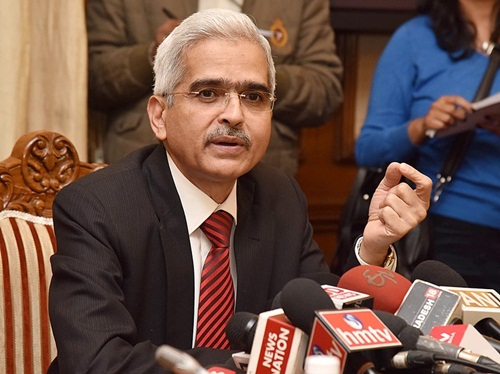The Monetary Policy Committee (MPC) of the Reserve Bank of India today announced a 25 basis point reduction in its policy repo to 6.25 per cent, from 6.5 per cent, offering a welcome relief to the government of Prime Minister Narendra Modi, which has for long been seeing lower interest rates to boost lending and lift growth.
Consequent to the reduction in repo rate under the liquidity adjustment facility (LAF) by 25 basis points from 6.5 per cent to 6.25 per cent, the reverse repo rate under the LAF also stands adjusted to 6.0 per cent, and the marginal standing facility (MSF) rate and the Bank Rate to 6.5 per cent, RBI stated in a release.
The MPC also decided to change the monetary policy stance from calibrated tightening to neutral.
These decisions are in consonance with the objective of achieving the medium-term target for consumer price index (CPI) inflation of 4 per cent within a band of +/- 2 per cent, while supporting growth, it added.
The MPC cited rising gold prices, volatility in equity markets and lower inflation in both advanced and emerging markets as the main consideration underlying the decision to cut policy repo rate.
Emboldened by the fall in December headline inflation to an 18-month low of 2.19 per cent, the MPC meeting, the first for RBI governor Shaktikanta Das, also decided to lower India’s inflation projection for April-September to 3.2-3.4 per cent from the 3.8-4.2 per cent seen in December.
The MPC also trimmed its economic growth forecast, to 7.2-7.4 per cent during April-September from its previous 7.5 per cent estimate.
The first advanced data released by the Central Statistics Office (CSO) on 7 January 2019, for 2018-19, placed India’s real gross domestic product (GDP) growth at 7.2 per cent – the same as in 2017-18 (first revised estimates). This is because of an acceleration in gross fixed capital formation (GFCF) and a slowdown in consumption expenditure (both private and government). The drag from net exports is estimated to decline in 2018-19, the MPC stated.
It also noted that some indicators of investment demand, viz., production and imports of capital goods, contracted in November/December while credit flows to industry remained muted.
Available data suggest that while revenue expenditure of the centre, excluding interest payments and subsidies, contracted in Q3, that of states increased sharply, thus maintaining overall growth in government spending.
On the supply side, the first advanced estimates placed the growth of real gross value added (GVA) at 7.0 per cent in 2018-19 compared with 6.9 per cent in 2017-18. The estimates incorporated a slowdown in agricultural GVA growth and an acceleration in industrial GVA growth.
Services GVA growth is set to soften due to subdued activity in trade, hotels, transport, communication and other services. Growth in public administration and defence services is also likely to moderate, the committee noted.
On the agriculture front, the MPC said Rabi sowing so far (up to 1 February 2019) has been lower than in the previous year, but the overall shortfall of 4.0 per cent across various crops is expected to catch up as the season comes to a close. The lower rabi sowing reflects a deficient north-east monsoon (44 per cent below the long period average); however, storage in major reservoirs – the main source of irrigation during the rabi season – at 44 per cent of the full reservoir level (as on 31 January 2019) was marginally higher than in the previous year. The extended period of cold weather in this year’s winter is likely to boost wheat yields, which would partly offset the shortfall, if any, in area sown.
Industrial activity as measured by index of industrial production (IIP) after an uptick in the festive month of October, slowed down in November. The year-on-year growth in core industries decelerated to 2.6 per cent y-o-y in December, pulled down by a slowdown in the production of electricity and coal; and a contraction in petroleum refinery products, crude oil and fertiliser output.
Equities pared gains while 10-year bond yields slid 3 basis points after the surprise rate cut. The rupee weakened to 71.69 against the dollar, but later strengthened to 71.45. The NSE index was up 0.05 percent at 11067.05 while the 10-year benchmark government bond yield fell to 7.52 per cent from Wednesday’s close of 7.56 per cent.































